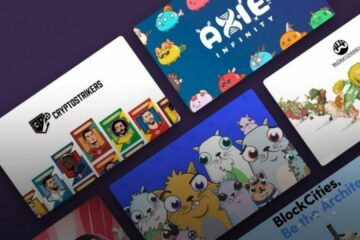A token is a unit of digital currency. It’s also called a cryptocurrency token or an altcoin, and it can be used as a form of payment on the blockchain network. The first tokens were created with bitcoin to bypass central banking systems for international financial transactions. This means that by using bitcoins, anyone from any country could pay another person in any other country without incurring bank fees or needing to use PayPal or Western Union. However, although bitcoin was the first token released into the world, it’s no longer the only one available-there are now hundreds more altcoins out there which have been designed to do specific tasks like speed up transactions and provide anonymity for users.
What is a token and what does it do?
A token is a digital asset that can represent some kind of value. Tokens are usually created by startups as a means to raise money for their projects, but they can also be created as rewards for those who contribute to those projects.
The process of creating and using tokens on the blockchain is called **tokenization**.
Some people call them **app coins** or **cryptocurrencies,** but we want to call them tokens because we think the term “coin” might confuse people into thinking they can invest in them like a traditional investment.
Tokens enable people to trade ownership of a product, service or asset on the blockchain. That could be anything from Monopoly money to bitcoins. The first token that was created for this purpose is **ether**, which represents the right to use ether’s computing power as well as storage space on its network. Tokens are usually used inside specific networks and allow users to buy products or services within them.
One example of a digital token is Storjcoin X (SJCX), which lets you purchase cloud storage space on Storj’s decentralized network. You can also earn tokens by renting out your own unused hard drive space, so you should see Storjcoin X in your wallet if you’re currently participating in the beta program.
The blockchain
A blockchain is a decentralized, digital ledger that records **cryptocurrency** transactions. Transactions are bundled into “blocks” and each block is chained to the block before it using cryptography, which makes it extremely difficult to change or remove information from the record after it has been added. This entire history of transactions, from day one, lives on every computer in the network. New transactions are checked against this record before they can be approved by the system.
The Bitcoin protocol uses proof-of-work (POW) consensus algorithms to maintain its network. POW essentially means that machines on the Bitcoin network must do work (in this case crunch numbers) in order for new blocks of Bitcoin transactions to be created and added to the blockchain. Machines that contribute more crunching power get a greater percentage of the new Bitcoins created and rewarded to the machines each time a block is found. The process of mining Bitcoins by contributing processing power to help create them is what led to the term **cryptocurrency** because it uses cryptography (hence, crypto) in order to secure transactions on the network.
Other cryptocurrencies like Litecoin and ZCash use alternative consensus algorithms like proof-of-stake (POS) and **proof of activity (POA).** These alternatives don’t require mining or miners in order for transactions on their networks to be checked against their records.
Smart Contracts
Smart contracts are bits of code that live inside your blockchain network. They’re a set of rules that lay out how digital assets can be handled by the people who use them. To use a smart contract, you need to **own some tokens** for that particular blockchain (it’s like having money in your checking account).
Most importantly, because these protocols live on the blockchain, they are universal-anybody using that protocol will get access to those smart contracts whether or not they’ve heard of your project before. If you create an ERC20 token (more on what this means later), anyone with an Ethereum wallet (which includes all Ethereum cryptocurrencies) will be able to interact with it and send it as payment. Even if you were the only one developing the entire platform, your tokens would still be universal.
Tokens are beneficial because they act as an incentive to use the platform you’ve created. If you want people to buy your digital product, it needs to be easily accessible and simple to understand. Tokens make this possible by allowing users to trade their current assets (like Bitcoin) for new ones that represent whatever you’re selling-in other words, they can buy what you’re selling with whatever they already have (and want).
What’s involved in creating a digital token?
Bitcoin was the first token released into the world. However, there are now hundreds more altcoins out there which have been designed to do specific tasks like speed up transactions and provide anonymity for users. To create a digital token, you’ll need three major building blocks: the blockchain, smart contracts and tokens. First, develop a blockchain that will serve as the backbone for your transactions; next, use smart contracts-which are pieces of code that run on a decentralized network-to write clear instructions for how people can buy and sell your product; finally, issue tokens that represent your new currency in order to make it work within the system. Once these steps have been taken, anyone from any country with an connection will be able to access your new currency and use it for financial transactions.
Create a digital token by developing a blockchain that will serve as the backbone for your transactions and then use smart contracts-which are pieces of code that run on a decentralized network-to write clear instructions for how people can buy and sell your product. Finally, you’ll need to issue tokens that represent your new currency in order to make it work within the system. Once these steps have been taken, anyone from any country with an connection will be able to access your new currency and use it for financial transactions.



0 Comments